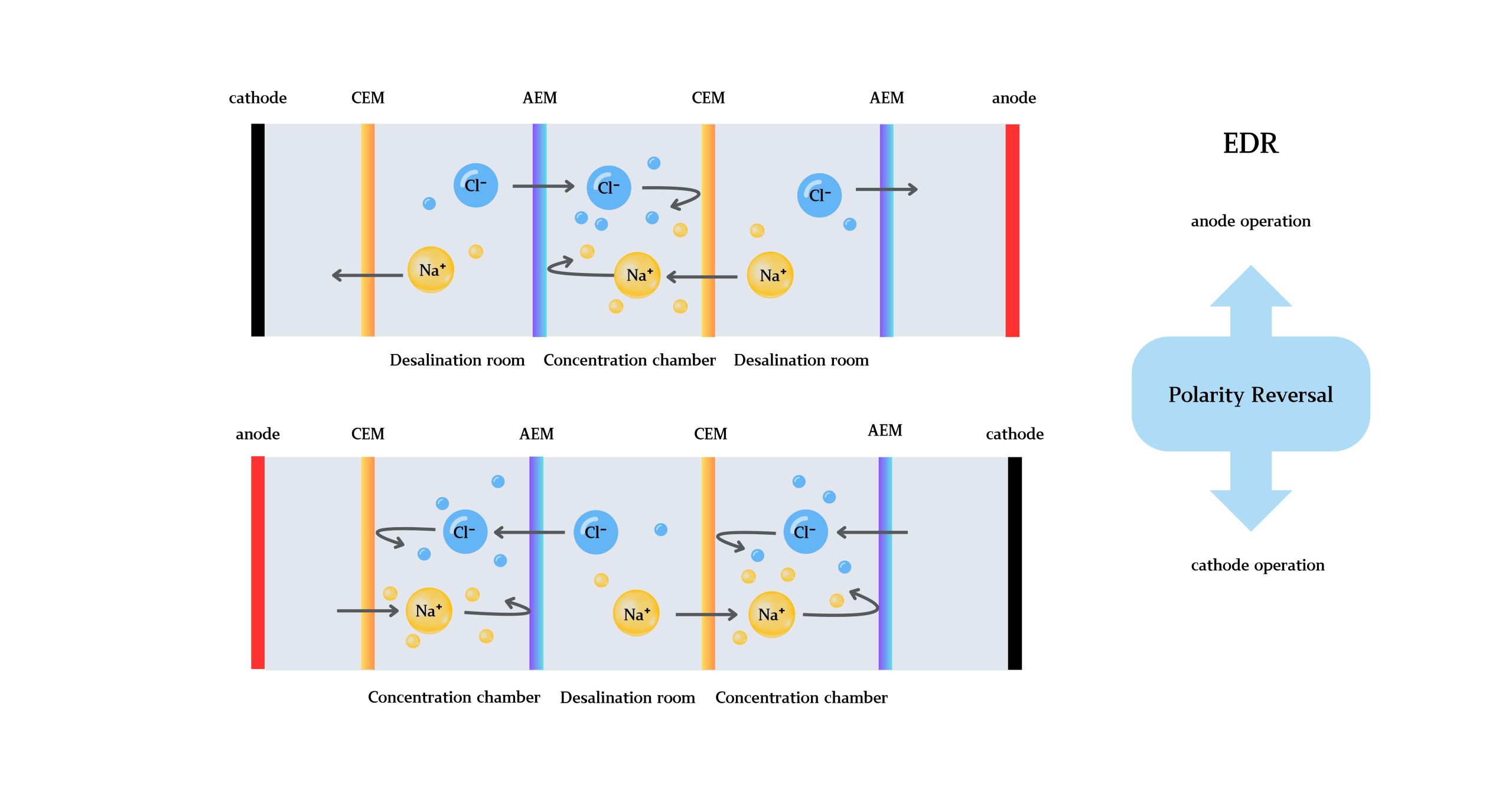
2. Automatic polarity reversal cleans the membranes.
3. High-purity water and concentrated brine are separated.
Reclaimed water/circulating water reuse;
Desalination/hardness removal of groundwater;
Treatment of high-hardness wastewater;
Wastewater treatment with strict desalination requirements;
Desalination of wastewater with high silica concentrations.

High recovery rates (80–90%).
Reduced energy and chemical consumption.
Strong anti-fouling capability of the ion exchange membrane.
EDR (Electrodialysis Reversal) achieves self-cleaning by periodically reversing polarity, allowing hydrated ions to migrate across the membrane surface, effectively rinsing away surface contaminants.
Electrodialysis system
Processing capacity:
10,512,000m³/year (1200m³/h × 24h × 365d ) sodium chloride


